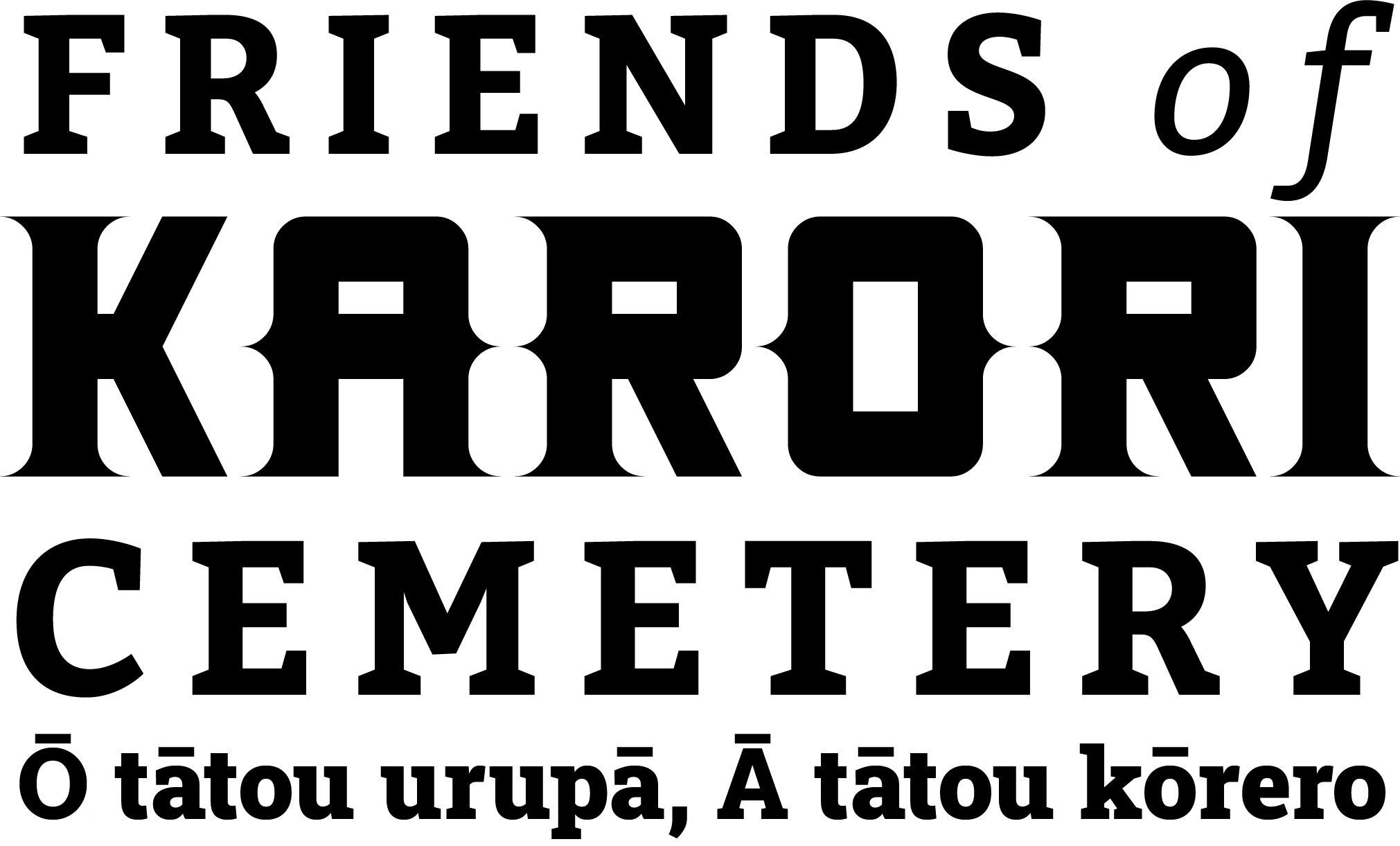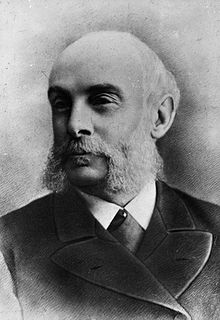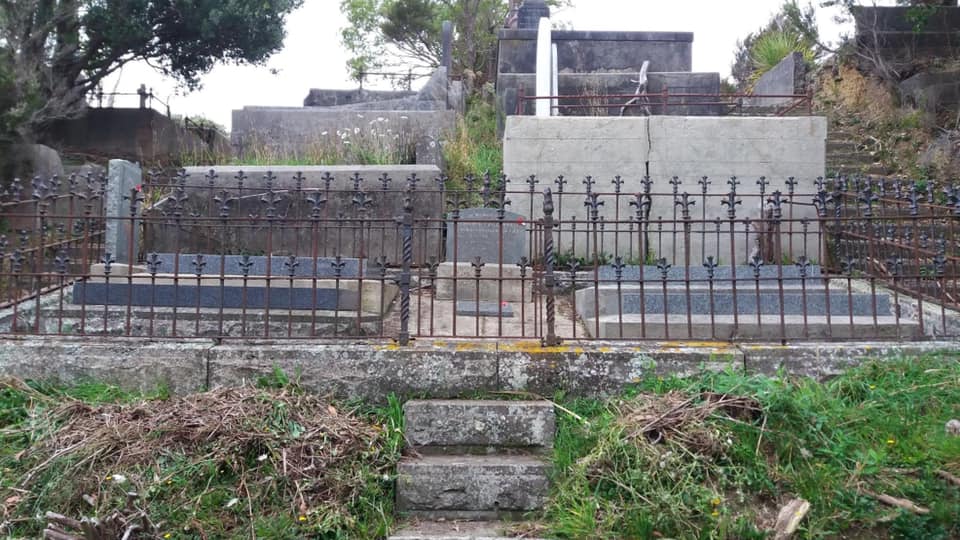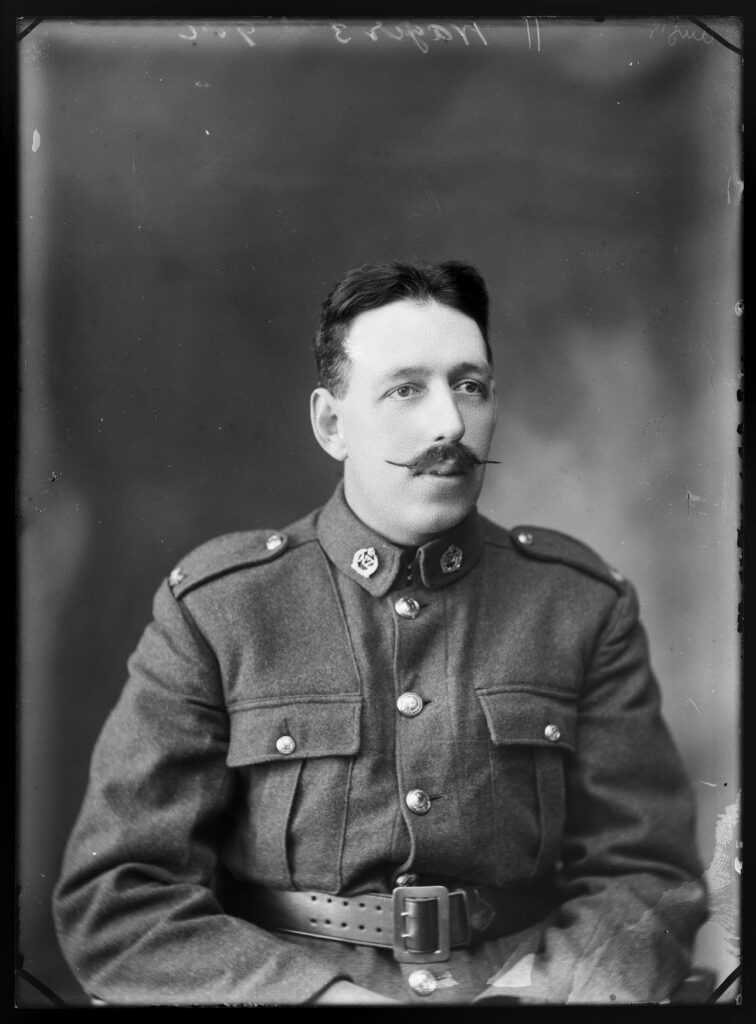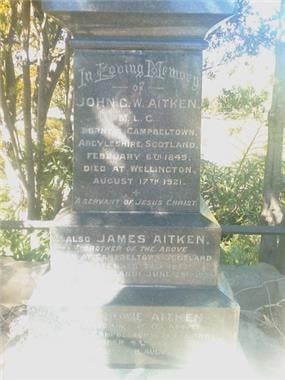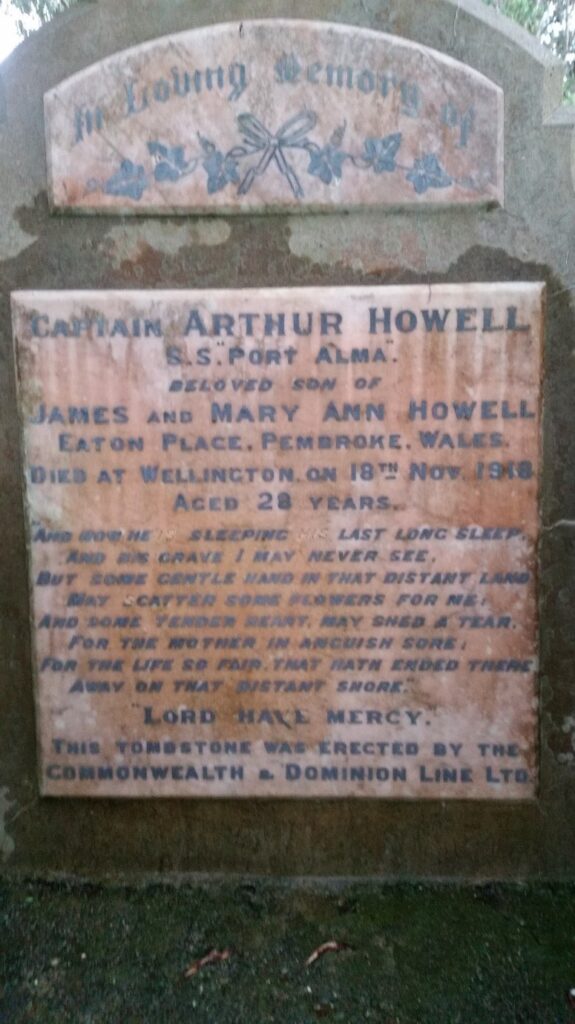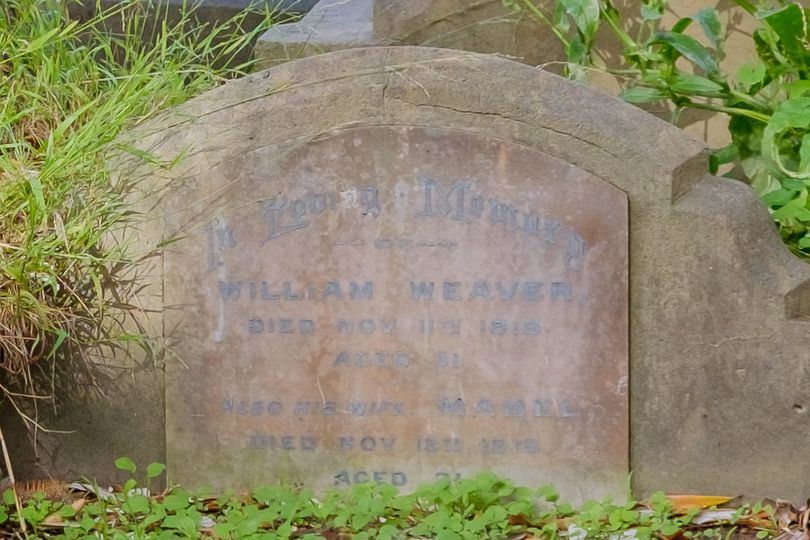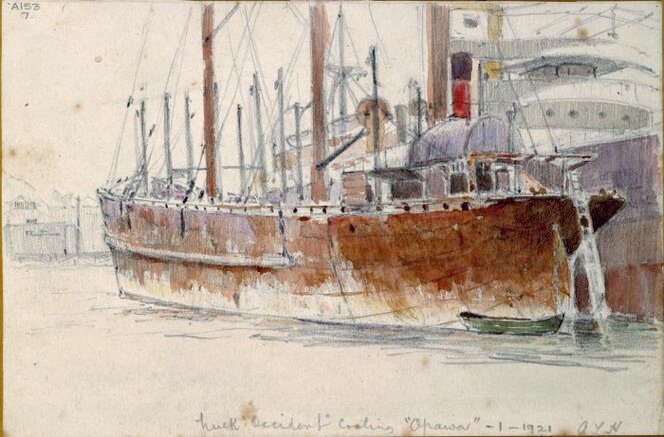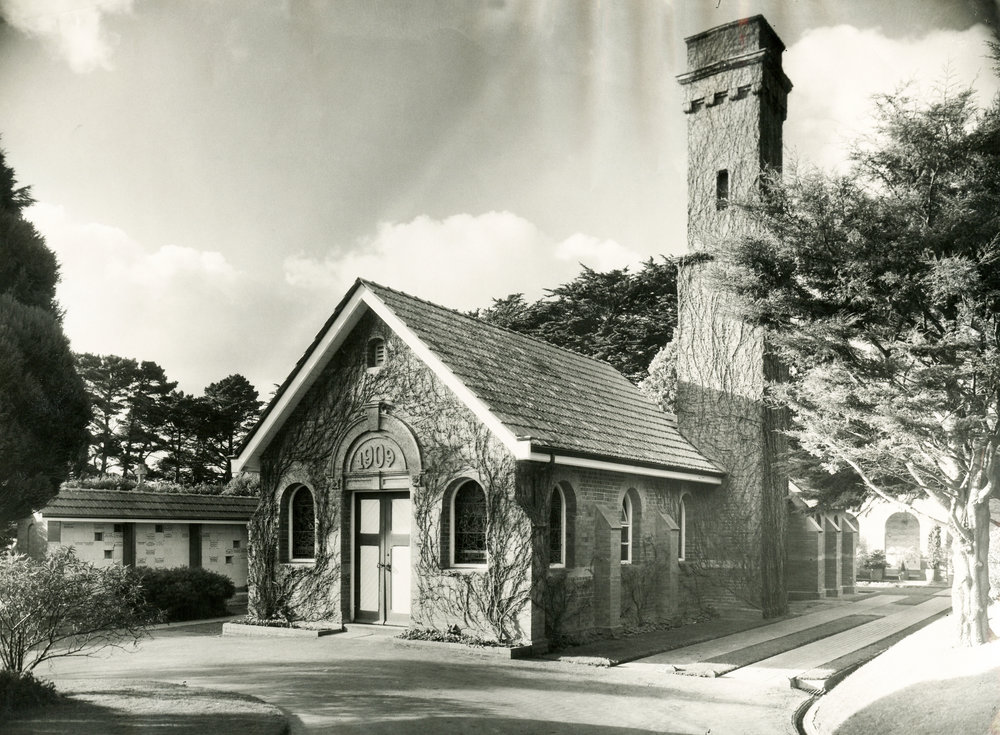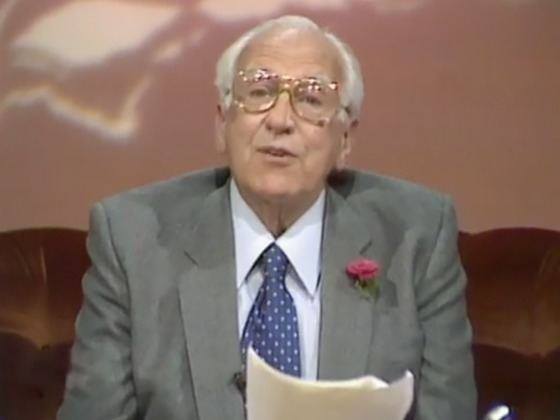Accidentally killed February 1904.
Erected by his shipmates.
This charming headstone caught our eye. Who can walk past “accidentally killed” and not wonder?
According to newspaper reports, James (aged 19) was an assistant pantryman on the SS Rotoiti. While crossing the Corinthic with a bag of linen to return to his own ship, he fell down one of the holds – a distance of about 40ft. He died in hospital a few hours later.
A native of Cheshire, James Burtinshaw was the son of Henry & Emily. His father had various occupations as a gas fitter, commercial traveller and property agent over the years. The family moved between the Isle of Wight, London and Stockport during James’ childhood.
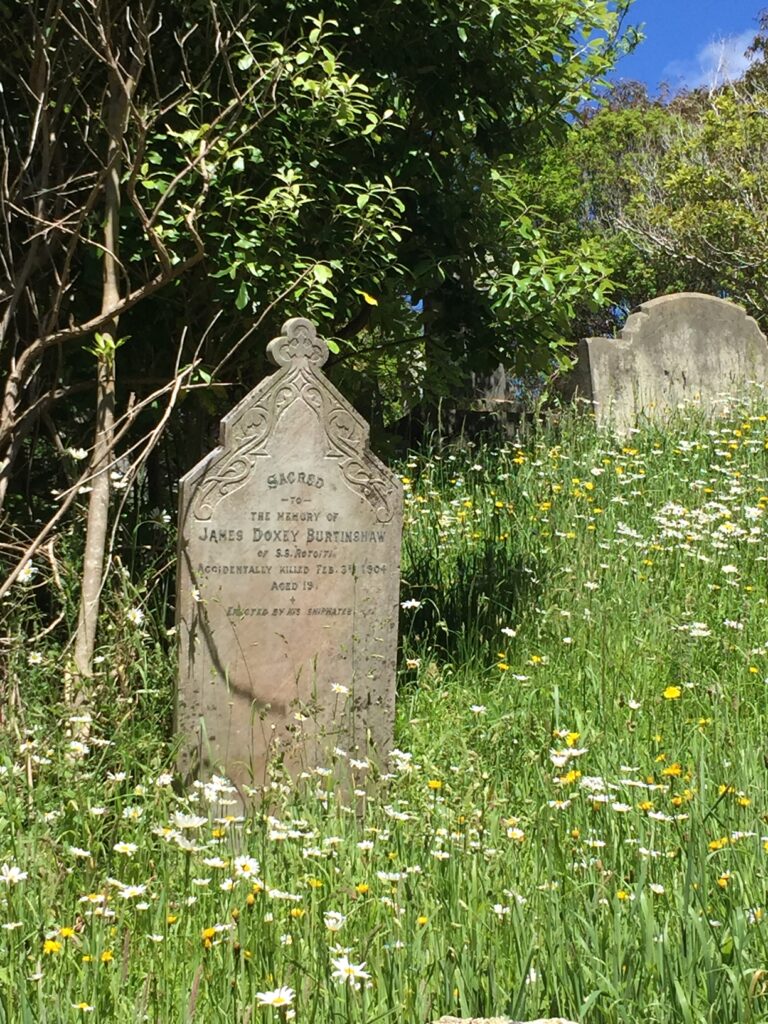
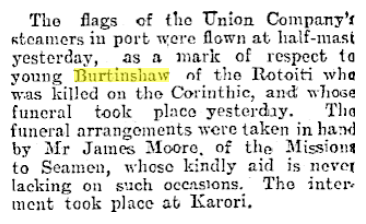

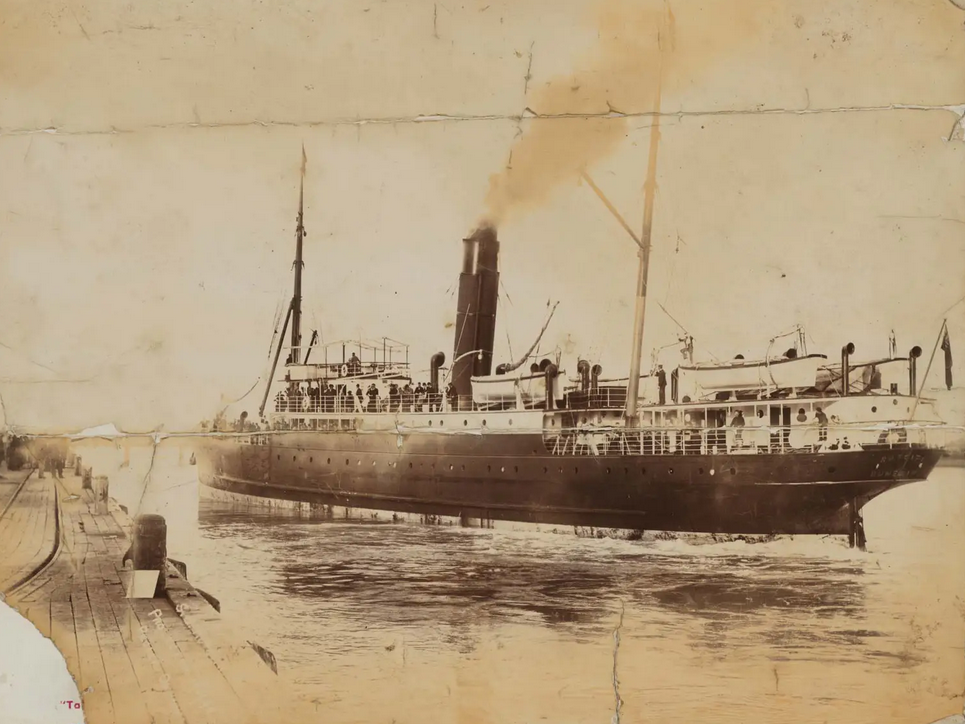
Description
Image of a large dark coloured steam ship on calm waters with a number of people aboard. Stencilled ROTOITI | DUNEDIN on the prow. Smoke rises from a large chimney in the centre of the image. To the left is a wooden wharf, with a crowd gathered to watch the ship in the distance.
Place Dunedin Other Number PH-1995-15-13
